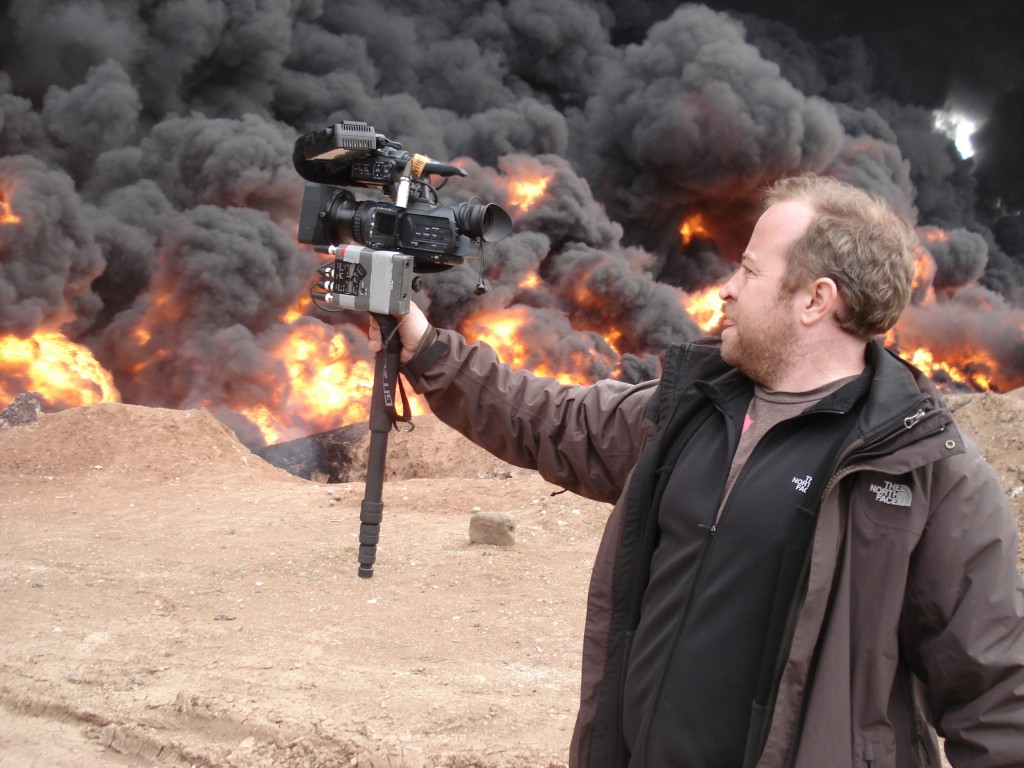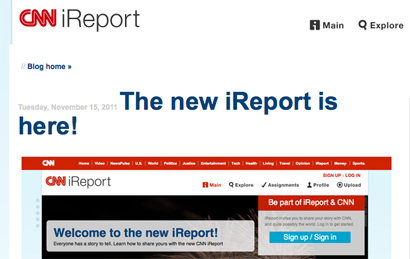Journalists from across all media platforms came together at the Frontline Club last night to discuss the impact of mobile on the newsroom and the wider media world.
“Mobile is as different to online as television is to radio,” CNN’s vice-president of mobile Louis Gump told the Frontline audience.
In the beginning people took someone who was sitting in the radio studio and put a camera on it. Then realised they didn’t have to do it that way. I think that’s what happening now.
He told Journalism.co.uk that the near future of mobile content needs to look at original content, rather than just using it as a new platform for existing material.
The biggest change I think will happen at CNN over the next two years is we are going to start creating content just for mobile devices. Right now most of what you see on a mobile from CNN you can also find on other platforms, but we will have more original programming.
The panel debate covered most of the ongoing issues surrounding mobile journalism, from the role a device plays in the image of a journalist to the debate over how such content should be used by ‘professional’ video journalists. Andy Dickinson, course leader of BA Digital Journalism Production at University of Central Lancashire, said it was a “mistake” to expect large news organisations to adopt the same production processes as smaller outlets.
I think it is a mistake to always be talking about what’s happening outside mainstream media, it won’t work for us. We can’t do it because of our agenda and personal and professional things get in the way of that. Now and then our big spotlight will land on it. But citizen journalism is not there to replace, it’s there to amplify.
Gump agreed, saying that the rise of citizen journalism “increases the value” of professional journalists, by “filling in the gaps”, but would not be a replacement: “We are still telling the hard news, [citizen journalism] enriches the overall offering”. Alex Wood, freelance mobile journalist and co-founder of Not on the Wires, added that mobiles were simply another platform to leverage the story. But he said in his own work, such as when he organised mass coverage of the G20 summit by mobile phones, the journalistic talent still had to shine through.
I always try to keep the integrity of the story and still worked very hard to make it journalistic. People tend to obsess about technology being one thing after another. Why not use your mobile phone to do your vox pops. There’s nothing wrong with you then putting that into a more traditional package. It’s another tool in the ever expanding toolkit that journalists have now. We can still take things from broadcast, for example framing a good shot and having good audio. Let’s go back to the basics but use them in the new technology.
He added that as a journalist using user generated content, old rules of fact-checking must still apply.
People can manipulate technology very easily and its still a worry. Journalists still need to pick up the phone and speak to the person if they have submitted media. We should always keep to those standards.
Jonathan Hewett, director of the newspaper journalism course at City University, agreed: “We are not going to chuck out the old stuff and forget the valuable lessons”. Prompting Dickinson to respond: “There’s a killer app on your phone that will allow you to check if something is right. It’s called your phone.”
Hewett said mobile has created opportunities for newspapers who do not have the visual reputation of a broadcaster, but more needs to be done.
Newspapers have been slower to catch up with more innovative stuff, but they are getting to realise mobile reporting is one way where a newspaper website can be different. It isn’t too fussed about quality of footage (…) We are still at early stage with mobiles full stop. We need to keep throwing spaghetti at the wall.
Wood commented near the end of the panel debate that he wanted to see more innovation from iPad apps, which he claimed had so far been “disappointing”, telling Journalism.co.uk to expect to see some exciting stuff from him in the near future.
CNN also announced the launch of a new international iPhone app featuring their iReport platform at the event. See our report here, and catch up with tweets from the event with the #cnnfrontline hashtag.


